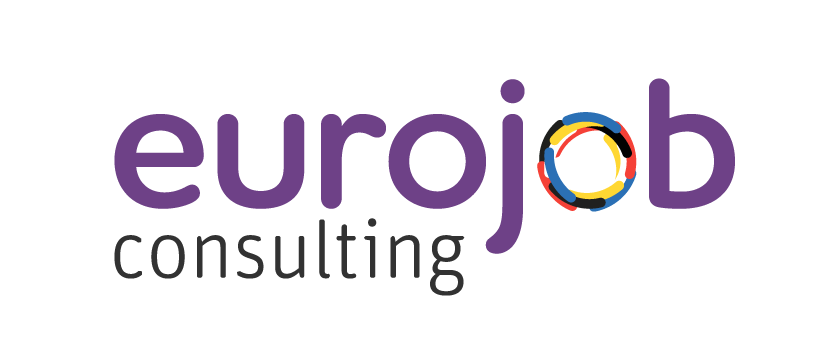French management style: Habits to change when managing a team in France

Managing teams across different countries presents unique challenges and requires an understanding of the cultural nuances that influence workplace behaviors and expectations. France and the United States, despite both being Western countries, have distinct approaches to management and leadership. We explore the key differences and offers concrete examples and statistics to help managers adapt their style when overseeing French teams.
2. Communication styles
3. Work-life balance
4. Attitudes toward authority
5. Team dynamics and collaboration
6. Conflict resolution
7. Practical tips for managing a french team

Hierarchical vs. egalitarian structures
In the United States, workplaces tend to have a more egalitarian structure where open communication and flat hierarchies are encouraged. Employees often call their bosses by their first names and feel comfortable sharing ideas and feedback directly. This approach is exemplified by companies like Google, which promotes a culture of open dialogue and flat organizational structures to foster innovation and employee engagement.
In contrast, French companies typically have a more hierarchical structure. Respect for authority and titles is significant, and there is a clearer distinction between the roles of managers and employees. This hierarchy impacts decision-making processes and communication styles within the workplace.
According to a survey by CNRS, 60 % of French employees feel that their opinion is less valued in hierarchical organizations, which contrasts with the more inclusive approach found in the U.S.
"Respect for authority and titles is significant, and there is a clearer distinction between the roles of managers and employees."
Lea Orellana-Negrin
Recruiter
Eurojob-Consulting

Decision-making
In a U.S. company, decision-making can be more collaborative. For instance, a study by Harvard Business Review found that 70 % of American employees expect to be consulted on decisions that affect their work. This inclusive approach allows for diverse perspectives and can lead to more innovative solutions.
In France, however, decisions are more often made at the top levels of management and then communicated down the hierarchy. This top-down approach can be seen in companies like TotalEnergies, where strategic decisions are made by the executive committee and then disseminated to lower management levels.
Direct vs. indirect communication
Americans are known for their direct communication style. They value clarity and straightforwardness, even if it involves delivering criticism. Phrases such as Let's get straight to the point reflect this cultural tendency. According to a survey by Pew Research Center, 75 % of Americans prefer direct communication in the workplace, believing it leads to better clarity and efficiency.
French communication, on the other hand, tends to be more nuanced and indirect. There is a greater emphasis on diplomacy and reading between the lines. Criticism is often delivered in a more subtle manner to avoid confrontation and maintain harmony. This style is deeply rooted in the French education system, which emphasizes the art of rhetoric and subtlety in expression.
Giving feedback
An American manager might say, Your report needs significant improvements in these areas, while a French manager might approach it by saying, I see some areas where we can enhance the quality of your report. This indirect approach can sometimes be misunderstood by American managers as a lack of candor.
A study by INSEAD highlighted that 68 % of French employees appreciate a more diplomatic approach to feedback, as it fosters a more positive and respectful workplace environment.

Different expectations
Work-life balance is an important consideration in both France and the United States, but the expectations and norms differ.
In France, there is a strong emphasis on maintaining a clear separation between work and personal life. The French labor law, known as Le code du travail, enforces a 35-hour workweek and mandates five weeks of paid vacation annually. Additionally, the right to disconnect law, implemented in 2017, allows employees to ignore work emails outside of working hours.
According to Eurostat, French workers have some of the highest levels of vacation days in Europe, averaging 30 days per year.
In contrast, the American work culture often glorifies long hours and constant connectivity. According to a survey by the International Labor Organization, the average American works 1,791 hours per year, compared to 1,482 hours in France. This culture of long hours is often associated with higher levels of stress and burnout among American workers.
After-hours communication
An American manager might expect their team to respond to emails and work-related messages after office hours. However, in France, sending work emails late at night or during weekends could be seen as intrusive and disrespectful of personal time. For instance, the French Ministry of Labor reports that 82 % of French employees appreciate the right to disconnect, which helps maintain a healthier work-life balance.
Formality and respect
French employees generally have a more formal attitude toward authority. Titles and formal greetings (such as Monsieur or Madame) are commonly used, especially in initial interactions or formal meetings. This formality extends to written communication as well, where polite phrases and formal language are customary.
A study by Ipsos found that 74 % of French workers use formal titles when addressing their superiors, highlighting the cultural importance of respect and formality.
In the U.S., the relationship between managers and employees is usually more casual. The use of first names is common, and there is often an informal tone in both verbal and written communication. This informality is seen in companies like Apple, where employees are encouraged to address even senior executives by their first names, fostering a more approachable and egalitarian work environment.
Addressing superiors
In a French company, addressing a superior as Monsieur Smith or Madame Dupont is the norm, while in an American company, it is more common to address them as John or Emily. This difference in formality can impact the perceived approachability of managers and the overall workplace atmosphere.
Group orientation
French teams tend to value group consensus and thorough discussion before reaching a decision. There is an appreciation for intellectual debate and the process of refining ideas through discussion. This approach is rooted in the French educational system, which emphasizes critical thinking and debate.
According to a survey by Glassdoor, 65 % of French employees believe that group discussions lead to better decision-making.
In contrast, American teams often prioritize quick decision-making and action. The focus is more on achieving results efficiently, sometimes at the expense of thorough deliberation. Companies like Amazon exemplify this approach, where the principle of disagree and commit is practiced, encouraging swift decision-making even amid disagreements.
Example: meetings
A French team meeting might involve extensive discussion and debate to explore all aspects of a problem before deciding on a course of action. In an American context, meetings are usually more focused on swiftly identifying a problem and agreeing on a solution. For example, a report by McKinsey & Company noted that American companies often use short, focused meetings to drive rapid progress and decision-making.
Diplomatic vs. confrontational
French workplace culture prefers a diplomatic approach to conflict resolution. Open confrontation is avoided, and issues are often resolved through negotiation and compromise. This preference for diplomacy can sometimes be perceived as avoidance by those accustomed to a more direct approach.
According to a study by ESSEC Business School, 71 % of French managers believe that maintaining harmony in the workplace is crucial for productivity.
Americans are generally more comfortable with direct confrontation and addressing issues head-on. This straightforward approach is valued for its efficiency in resolving problems quickly. A survey by SHRM found that 78 % of American managers prefer to tackle conflicts directly to ensure they are resolved promptly.
Handling disagreements
In France, managers might approach a conflict by having private, one-on-one discussions to mediate and find a middle ground. In the U.S., it might be more common to address the issue directly in a team meeting to quickly resolve the conflict.
For example, Microsoft encourages open dialogue and direct conflict resolution, believing it leads to faster and more effective problem-solving.

Respect hierarchies: Understand and respect the hierarchical structure in French companies. Recognize titles and formalities in your interactions. Familiarize yourself with the French Labor Code.
Adapt communication styles: Use a more diplomatic and indirect approach when giving feedback or addressing issues. Be mindful of the subtleties in communication. Consider resources from INSEAD for more insights.
Honor work-life balance: Be aware of and respect the strong boundary between work and personal life. Avoid expecting responses to work communication outside of office hours. Learn more about this from the French Ministry of Labor.
Foster group consensus: Encourage thorough discussion and debate within the team to reach consensus. Appreciate the intellectual rigor that comes with this process. For further reading, refer to Glassdoor.
Handle conflicts diplomatically: Approach conflicts with a focus on negotiation and compromise. Avoid direct confrontation when possible. Resources from ESSEC Business School can provide additional strategies.
Successfully managing a French team requires an appreciation of the cultural differences that influence workplace behaviors and expectations. By understanding and adapting to these differences, managers can foster a more harmonious and productive working environment. The key is to balance respect for the French way of doing things with the operational goals of the organization.
For further reading on this topic, consider exploring resources such as the Harvard Business Review and the International Labor Organization for additional insights and statistics on workplace culture and management practices across different countries.

Jérôme Lecot




